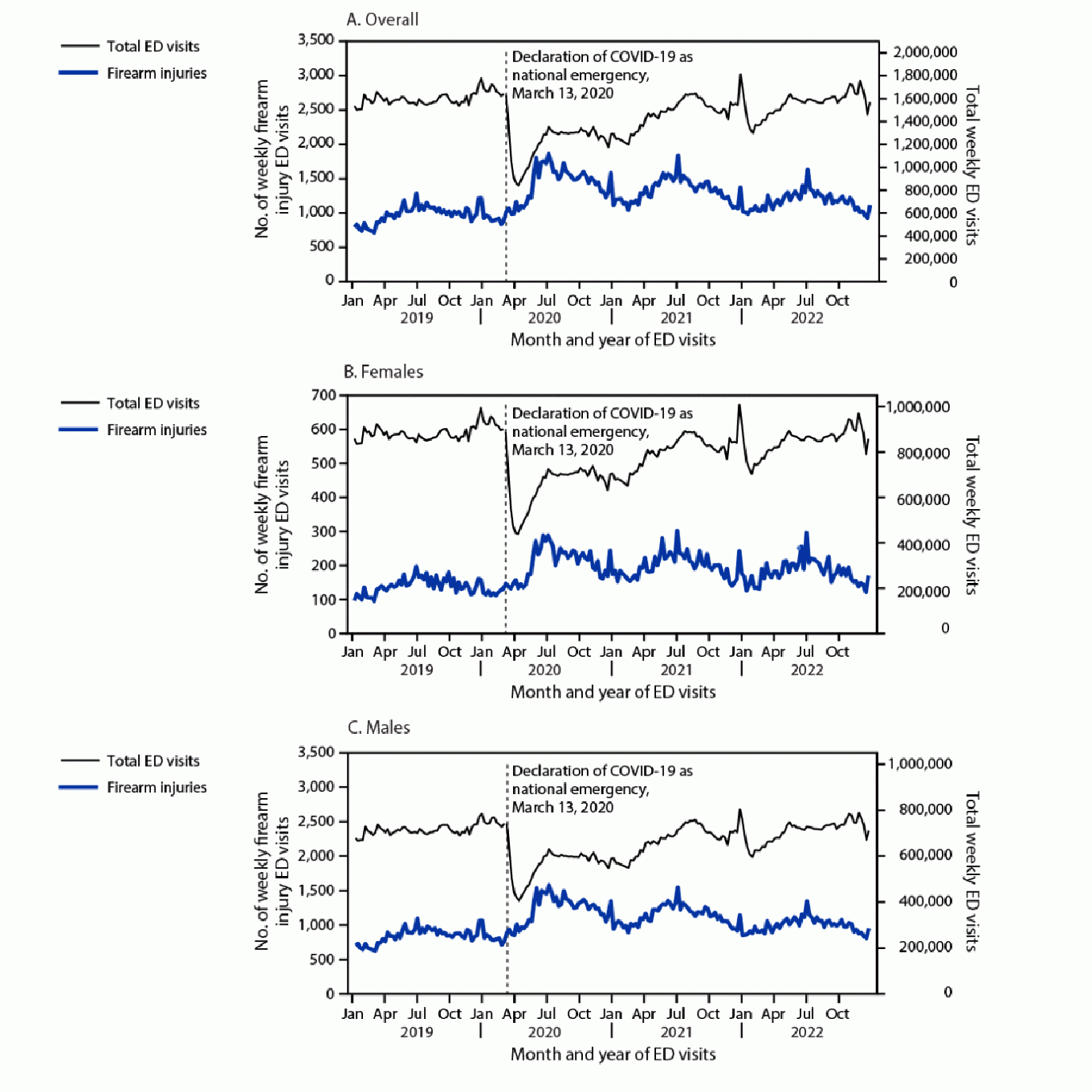Hospitals saw a dramatic uptick in emergency department visits for gunshot injuries since the onset of the COVID-19 pandemic, particularly among children, according to a March 30 report published by the Centers for Disease Control and Prevention.
The report found that by the end of 2020, emergency visits for firearm injuries were 37 percent higher than in 2019. The number increased for every age group, and for both males and females, but the biggest increase was among children. Visits among children ages 0 to 14 went up 44 percent, with the biggest jump — 69 percent — among girls under 15.
In 2021, ER visits for gunshot wounds were still 36 percent higher than pre-pandemic levels, and the surge among those under 15 was even more pronounced than in 2020: up 50 percent over 2019. For girls under 15, ER visits were more than 70 percent higher in 2021 than in 2019.
“Where we could easily go a year without seeing a young woman who had been shot, we have seen more young women, children, and girls, shot in the last year,” Dr. Jose Prince, the chief of pediatric surgery at Cohen Children’s Medical Center in Queens, New York, told The Trace. “You have to worry about how these young women are being exposed to firearms for these injuries to occur.”

The increase in children visiting hospitals for firearm injuries coincides with an increase in the number of children injured and killed in domestic violence shootings since 2020. It also tracks record-breaking firearm sales and total gun deaths in the first two years of the pandemic.
The report relied on data from the National Syndromic Surveillance Program, which gathers near-real-time data from hospitals across the country. The data does not indicate intent or type of firearm injury. For example, it doesn’t show whether the injuries were intentional shootings, accidents, or suicides.
The CDC’s report breaks down gunshot injuries on a weekly basis, adding new detail to the already well-documented increase in gun violence since the pandemic began. It shows that ER visits for gunshot wounds began to gradually increase in March 2020, as the U.S. declared COVID-19 a national emergency, even as ER visits for other injuries plummeted. By late May 2020, the number surged, corresponding with protests over the police killing of George Floyd and the loosening of COVID-19 mitigation measures.
While young women and girls under 15 saw the largest increases in firearm injury visits, the overall number of ER visits for firearm injuries remains highest among young men and boys. In 2021, boys accounted for nearly three times as many ER visits for firearm injuries as girls.
“We’ve known that young men are often victims of gun injuries and gun violence,” Prince said. “But this is highlighting that this is not staying limited to that population.”
Previous studies have cited increased firearm purchases and limited parental supervision as potential factors associated with heightened risk for firearm injuries among children since the pandemic began. “You can’t separate the reality in my mind that more firearms lead to more risk that they’ll hurt someone,” Prince said. “Kids were at home more during the pandemic and since the pandemic, and had more access to weapons.”
Disruption to daily routines, schooling, and mental health care, along with increased housing and financial insecurity may have also contributed, the authors of the CDC report wrote.
“A comprehensive approach is needed to prevent and respond to firearm injuries and address the social and economic inequities that contribute to the risk for violence,” the authors wrote.
In 2022, the number of ER visits declined compared to 2021 and 2020 but remained 20 percent higher than in 2019. While the decline could suggest that the surge in gun violence brought on by the pandemic is subsiding, children under 15 still accounted for a disproportionate share of ER visits for gunshot wounds compared to before the pandemic.
“When you look at the day-in and day-out firearm injuries for children, perhaps this surge is slowing down,” Prince told The Trace. “But obviously, slowing down is not the same as reversing it and eliminating it, which is critical for us to move forward.”


